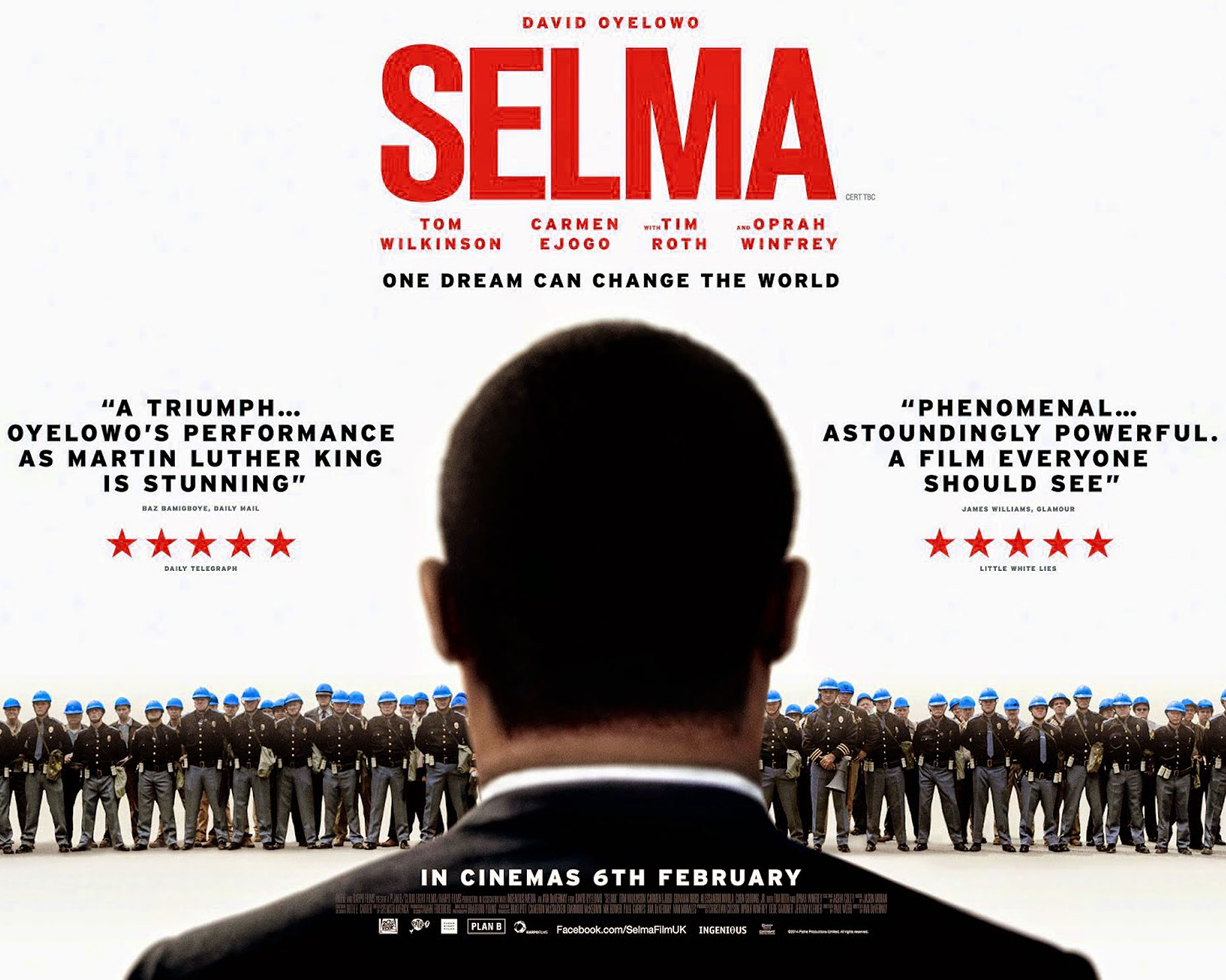How hiphop is used in the trailer SELMA (2015)
Musical analysis
The structure of the trailer is in the first 30 seconds clearly focussed on the text. It starts with quavers, staccato, in the form of a drone. The instrument that you’ll hear sounds like a plucked string playing pizzicato with a floating pitch; it is sounding kind of dissonant. The variety with the text is done by using a drop-structure with a low percussion that sounds pulsing; like an heartbeat.
With the introduction of the president it is made clear that he is the antagonist. The percussion is put is a faster tempo and a low long, swelling tone, played by low strings, is added. This aspect brings tension and puts an accent on a certain threat. After that you’ll hear a slow rising glissando by synthesizer. This is building up to the climax of the drop on 00:27 where an ‘absence of sound for the punchline moment’ is used.
From 00:33 on the conflict and opposition is introduced. You’ll hear a basso ostinato, staccato played by low strings and kettledrums played softly, but also sound very low, which makes it sounds like a continuous thunder miles away. A striking sync-point is used on 00:39 by using a sound effect as percussion by the beating with a police bat. On 00:47 the musical unity is shortly broken, again for a punchline Selma it is. Between 00:56 and 00:57 a comparable moment of silence is heard. The low strings are brought to the foreground even more. On 00:55 there is again a sync-point; this time it is a punch in Martin Luther Kings face with percussion.
After the first minute of the trailer the chord-progression, introduced by Scott Murphy in a Pop Music Progression in recent Popular Movies and Movie trailers as a sign of heroism, introduced. This progression is linked to the personage of Martin Luther, so you’ll imply him as the protagonist of the movie. On 01:12 there is a drop, where after the progression is stretched over the images and jumps to the next chord each time the shot is changing. On 01:18 there is a sync-point of percussion together with the flash of the camera that makes a mugshot of King. On 01:25 there is, again, a drop and an absence of sound for the punchline moment; this time to introduce some humor.
From 01:37 on you’ll hear the intro of the song: Say it like it really is from Public enemy. The many changes to a new shot are synchronised with the rhythm of this intro. Later on occasionally a text is show and every time that happens, you’ll hear a short dull percussion battle. On 02:10 there is again an absence of sound and on 02:23 there is a comparable moment without music, followed by a drop on 02:26, where after the film title is shown.
The trailer clearly uses the genre hiphop, what an anachronical connection makes with the dark race. On the other hand they also use the classical style; strings and percussion. The beginning of the trailer specifically uses the classical style and after that they turn over to the hiphop genre. The structure of the trailer and the narrative that is shown, is supported by the music. First they show the problem; the culture of the white people is leading, either the use of classical music, however King is fighting for equal treatment and in the second part of the trailer the black people stand up with the supporting hiphop; either a metaphor for the shifting power relations.
Besides that the trailer uses the rhetoric of the narrative/plot, because the film story is about the historical events of Martin Luther King and specified the event of the protest walk in Selma, Alabama in 1965. With that the rhetoric of the genre is taken as guideline, namely the historical drama. The historical aspect is found back in the plot and images. By accenting the historical aspects with music, like the use of the drop-structure, sound effects as percussion or the use of the hero-chord progression the audiovisual rhetoric of the genre is can not be missed.
The following part is written with the use of theory explained in another article from me:
https://steemit.com/music/@inmusicalterms/musical-intermediality-rodman-s-theory-of-television-analysing
Whe you use the model of Jakobson you’ll have to do it with the song Say it like it really is. In the area of referring the song makes an anachronical connection, but the choice for HipHop comes fort from the association with peaceful protest in contrast with funk that is often linked with violence. Phatically this song ensures the structure while seeing fast shot changes in the trailer. Poetical, either based on aesthetic support the ostinato and lyrics this revolution goes on and on lean on each other, since they both have the same message. On expressive level the film says about the maker that they experienced the historical event as unfair for the black community, since Martin Luther King is imaged as the protagonist. You could say they position themselves at the side of the emancipation movement. The connotative function could be more; namely the target audience interested in history, drama or the emancipation movement.
By using Fiskes model the reality is that the classical and hiphop styles are used. The representation in the trailer are done by the structure based on rhythm and dance music and sound effects in the form of percussion. From that we’ll take the conventional thoughts of hiphop; music from the black community about the life in ghetto’s and setbacks which they have to get through. With that the structure of the trailer is dramatizing by accenting the details. The ideological message would be; we are all the same and equal, or; race does not matter.
Yours Sincerely @inMusicalTerms
P.s.: take a look at my last article about jazz 😊 https://steemit.com/jazz/@inmusicalterms/a-strange-history-of-jazz



You got a 1.67% upvote from @minnowvotes courtesy of @inmusicalterms!